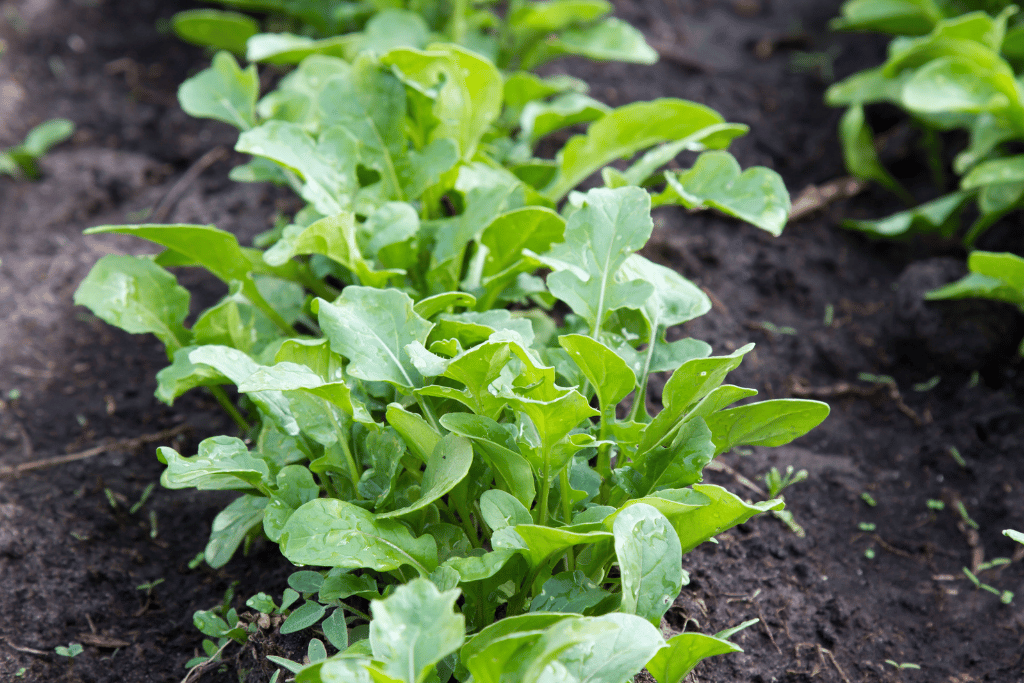
Welcome to the realm of habaneros! Get ready to learn the ins and outs of these pungent treats, including the all-important question: when are habanero peppers ready to be picked? Let me invite you on an exciting adventure where you’ll discover all there is to know about the development, harvest, and uses of these spicy wonders!
About Habanero Peppers In General
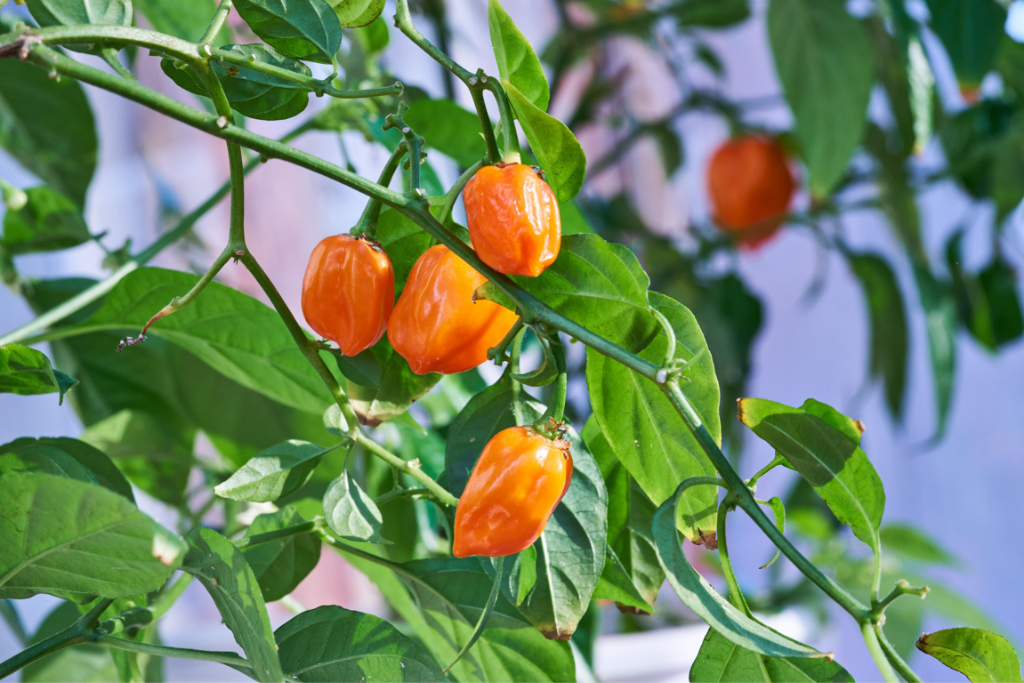
Habanero peppers, scientifically known as Capsicum chinense, are members of the Solanaceae family and are believed to have originated in the Amazon basin. These small, lantern-shaped fruits come in a range of bright colors, including orange, red, and yellow. Unlike the similar-looking bell peppers, they are highly prized for their intense heat level, ranging from 100,000 to 350,000 Scoville units.
The plants themselves grow to be about 2-4 feet (about 0.6-1.2 meters) tall and produce relatively small, round fruits that are only about 2-3 inches (approximately 5-7.5 cm) long. Despite their diminutive size, habanero peppers pack a serious punch and are used in a wide range of culinary applications, from salsas and hot sauces to marinades and rubs.
The flesh of habaneros is quite hot and has a distinct fruity flavor that makes it a popular ingredient, especially in several Caribbean and Latin American dishes. The seeds, on the other hand, are even more pungent and are often utilized to make spicy condiments like pepper jelly or added to homemade hot dips for an extra kick.
Habanero Pepper Growth Stages
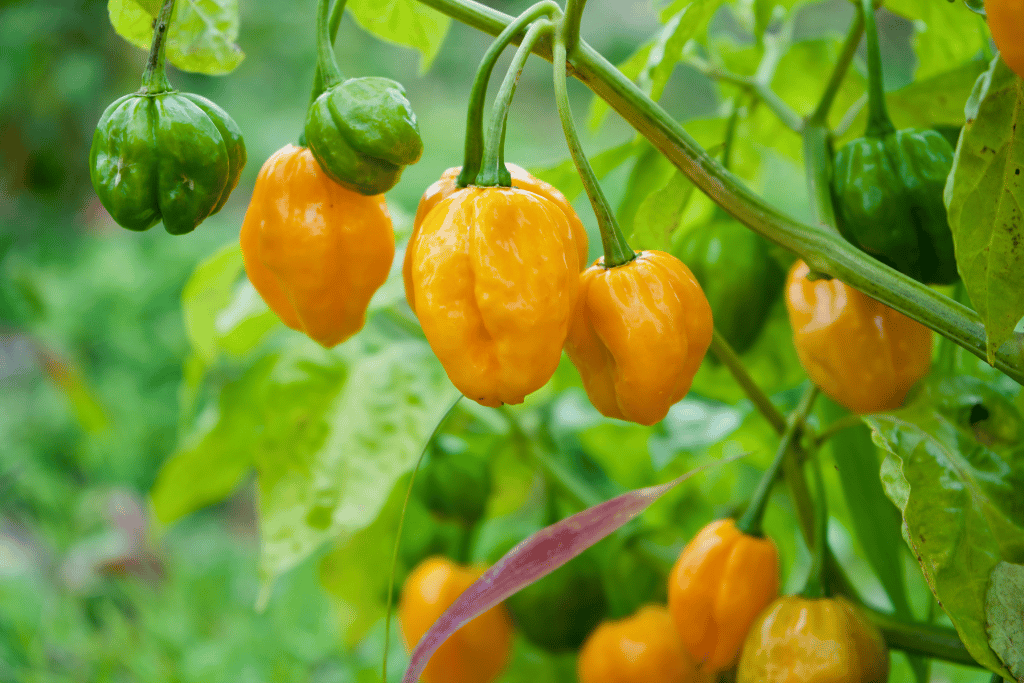
1. Germination (2-3 weeks)
The habanero journey begins with the simple act of planting seeds. For the best results, start your seeds indoors about 6-10 weeks before the last frost. Plant them 1/4-inch (around 0.5 cm) deep in a well-draining seed starting mix. Keep the soil temperature between 70-85°F (21-29°C) and maintain consistent moisture. In about 2-3 weeks, you’ll witness the birth of your fierce babies as they sprout from the soil.
2. Seedling Stage (3-6 weeks)
As your habanero seedlings grow, they’ll develop their first set of true leaves. This is the perfect time to move them into individual pots, giving them ample room to flourish. Continue to provide them with plenty of light, preferably 14-16 hours per day, and consistent moisture. Watch out for any signs of stress, and ensure they receive adequate nutrients.
3. Transplanting (6-10 weeks)
Once your leafy companions have developed a robust root system and at least two sets of true leaves, they’re ready for the great outdoors! Wait until nighttime temperatures remain above 50°F (10°C) and harden off your plants over a week. Choose a spot in your garden that receives full sun and has loose soil. Space the plants 18-24 inches (about 45-60 cm) apart and remember to keep them well-watered throughout their development.
4. Vegetative Stage (10-14 weeks)
During the vegetative phase, your greenery will prioritize foliage growth. Provide a balanced, slow-release fertilizer to encourage a strong, healthy plant. Monitor for pests and diseases and take the appropriate measures if necessary. Your patience will be rewarded as you watch your habanero plants grow and thrive.
5. Flowering and Fruit Set (14-18 weeks)
As the greens mature, they’ll start producing lovely white flowers. Pollination is key during this stage, so give a helping hand if needed. Once pollinated, the flowers will develop into tiny green peppers, which will gradually grow and change color as they ripen.
6. Harvest (18-22 weeks)
In case you’ve been wondering when to harvest habanero peppers, well, the time has finally come! At around week 18-22 from planting, the peppers change from green to their final ripe color and reach their peak heat and flavor. At this point, the skin should be shiny and firm to the touch, which is a classic indicator that your pungent pals are ready to be detached, stored, and processed according to your preferred methods.
When To Pick Habaneros
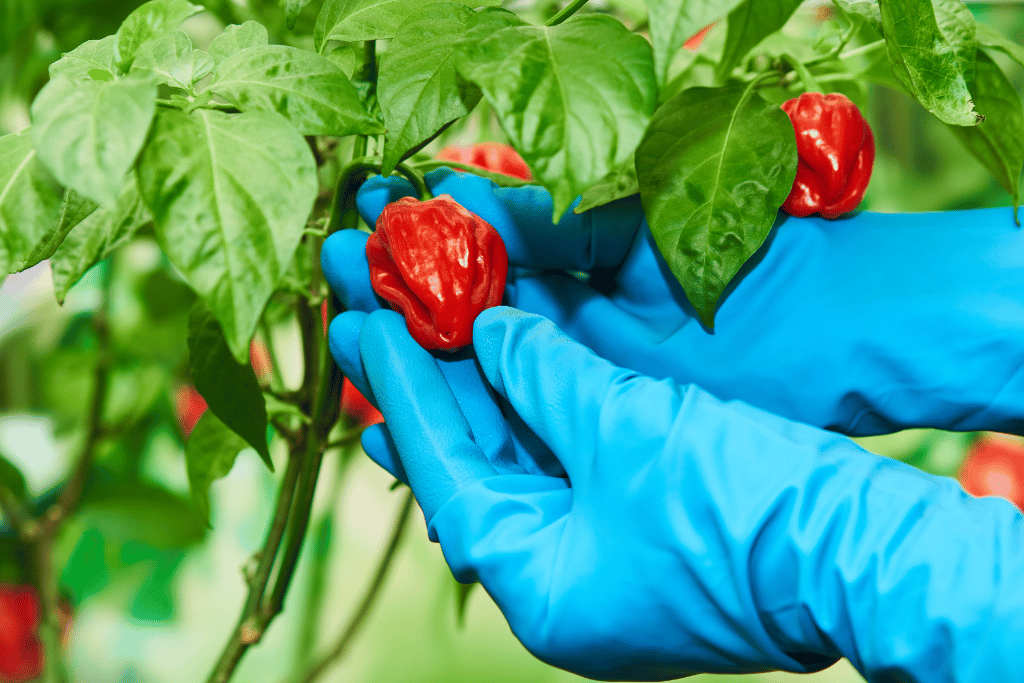
Timing plays a crucial role in harvesting your fiery yield. Here are some specific, and useful tips on how to tell when habaneros are ready to be picked:
- Color: Keep an eye on the color of your peppers. Habaneros can be found in a variety of colors, including red, orange, and green. Most green varieties will turn to their ultimate color, which could be red or orange when they’re ripe. Red and orange varieties will become more vibrant when they’re ready to harvest. There are also distinct green varieties that remain the same color throughout their whole life cycle. It all depends on the specific type you planted in your garden. In general, green habaneros need the same amount of time to mature as red and orange ones.
- Size: Habanero peppers typically grow to about 2-3 inches in length and 1.5-2 inches (about 3.5-5 cm) in width. Once they’ve reached their mature size, it’s a great sign that they’re ready to be harvested.
- Skin texture: A ripe habanero has firm, smooth, and slightly shiny skin. If the exterior appears wrinkled or has soft spots, it might be overripe.
- Time: These piquant fruits usually take 75-100 days to mature from transplanting. If your peppers have been growing for this long, it’s likely that they’re ready to be separated from the plant.
- Stem attachment: Even if they are already ripe, habaneros won’t fall off the plant on their own. However, when you gently tug on them, they should easily detach from the stem.
How To Pick Habanero Peppers
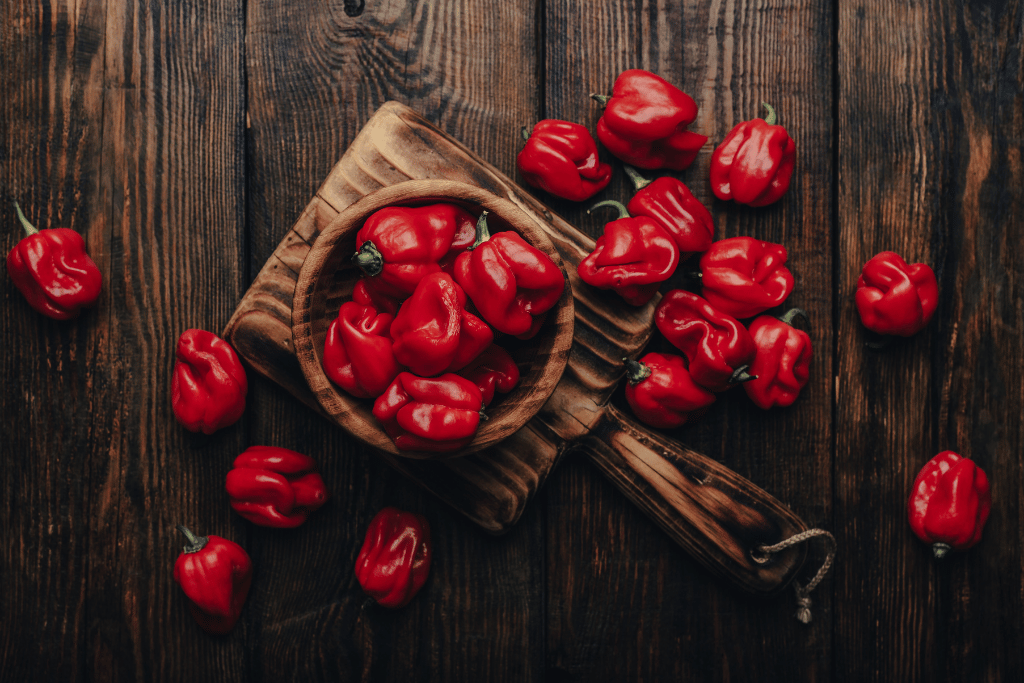
Now that we’ve covered when habaneros are ready to be picked, let’s move on to the proper way to collect your yield. Having the right harvesting technique is essential to ensure your plants continue to thrive and produce more intense fruits for your enjoyment.
- First and foremost, always wear gloves when handling habanero peppers. The capsaicin that gives them their heat can cause skin irritation, so it’s better to be safe than sorry!
- To start the gathering process, carefully examine the pepper’s stem. You’ll want to make a clean cut about half an inch above the fruit. This helps to protect the plant and encourages continued growth.
- Using sharp, clean pruning shears or a knife, make a swift cut through the stem. Be sure to sanitize your tools before and after harvesting to prevent the spread of diseases between plants. If you’re collecting several specimens, carry a clean container to compile your habaneros and avoid dropping them on the ground.
As a friendly tip, try to harvest habaneros on a cool, dry day to reduce stress on the plant and ensure the best quality fruit. Regularly picking ripe produce also encourages the plant to grow more peppers, so keep an eye out on your greenery and enjoy the abundance of sharp flavors!
Are Unripe Habanero Peppers Edible?
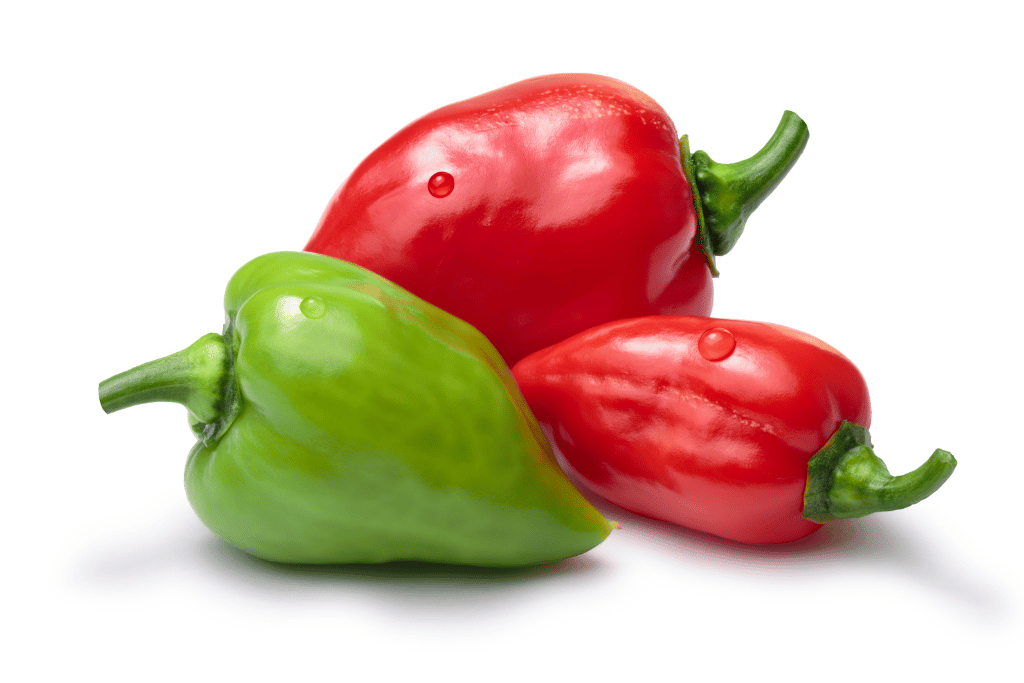
Even though green or unmature habaneros can indeed be eaten, they have a different flavor and heat level than their fully ripened counterparts. But funnily enough, they are hotter than serrano or cayenne peppers even at this premature stage. When unripe, these heat grenades are still growing and haven’t completely developed their fruity sweetness. As a result, they tend to have a more grassy or vegetal flavor and a more intense heat level. However, if you’re looking to add some extra fire to your dish, using green habaneros can be a great option. Just be sure to utilize them sparingly and consider their spiciness before adding them to your recipe.
Harvesting Habaneros For Seeds
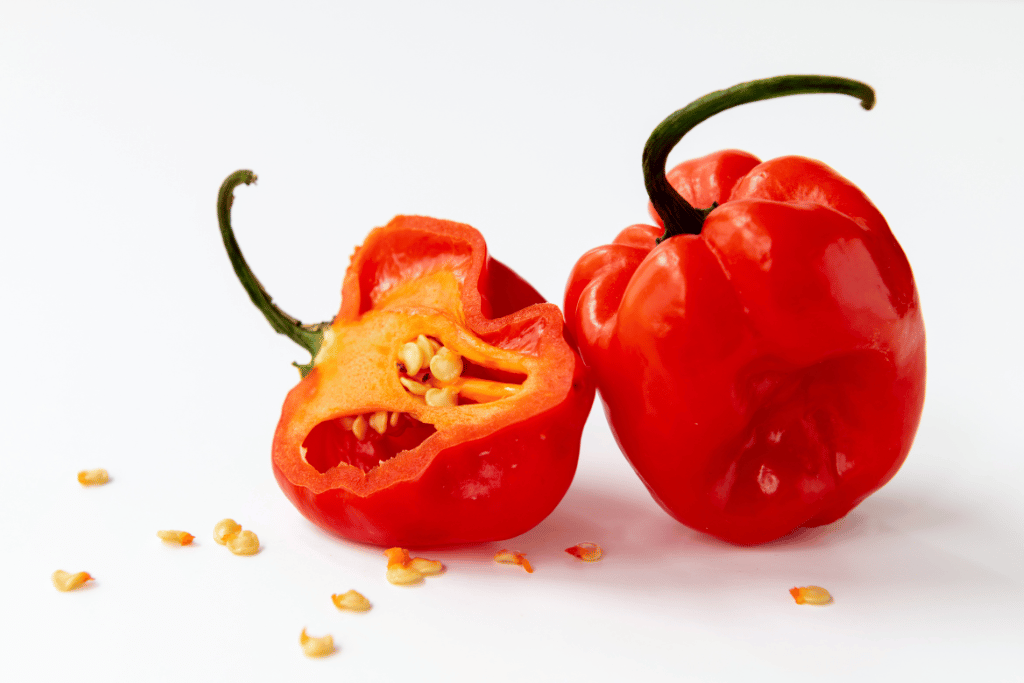
In case you’re looking to pick these vivid gems for their seeds, it’s essential to wait until the fruits have completed their ripening process and turned their characteristic bright color. See? This is another reason you must know when to harvest habanero peppers. Once mature, cut the chosen specimens open and carefully scrape out the seeds, being sure to wear gloves to protect your hands from the spicy oils. Place the seeds on a paper towel and allow them to dry completely, which may take a few days. Once they’re dry, store the seeds in an airtight container in a cool, dry place until you’re ready to plant them.
Will Habanero Peppers Continue Ripening Once Picked?
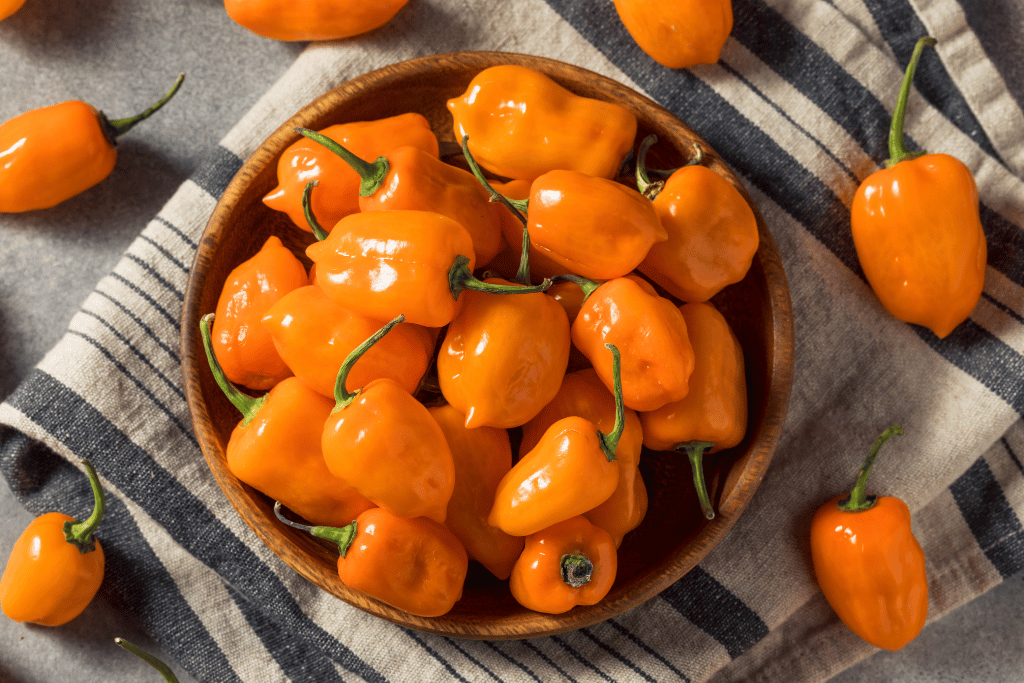
Now that you already know how to tell when habaneros are ready to be picked, you probably won’t make the mistake of harvesting them too early. I can only encourage you not to do so because once separated from the plant, the fruits stop developing. Sure, their outer skin might change color eventually, but the taste will be unmemorable.
It’s a question that has stumped numerous pepper enthusiasts actually. Ask them if it’s okay to harvest prematurely and they’ll say “yes” faster than you can say “Scoville scale“. But question them about the taste, and they’ll sheepishly admit that nothing beats a fully-ripened habanero, plucked fresh off the branch.
Why is that you ask? Well, it’s quite simple. Once detached from the stem, the produce is cut away from receiving the necessary nutrients for maturing further. Therefore, it has no chance of developing its signature flavor.
So, if you’re using green habaneros solely for their vibrant color, go ahead and pluck them early. But if you want to experience the full depth of spiciness that these bad boys have to offer, wait until they’re completely mature. After all, good things come to those who wait, right?
How To Store Harvested Habaneros
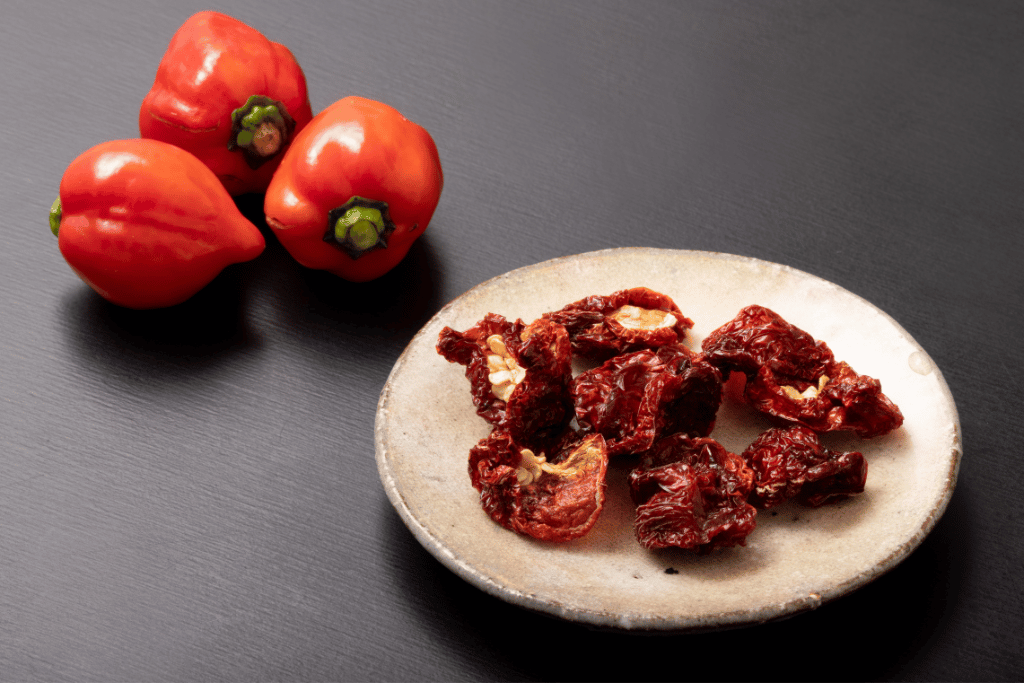
Knowing when to pick habaneros is only half the battle. To keep them crisp and flavorful, you’ll need to store them correctly. When it comes to putting away these tasty treasures, you have numerous diverse options to choose from.
I’m sure that refrigerating habaneros is one of the first methods to pop into your head, and you’re not mistaken when you think it will somewhat elongate their shelf life. However, for shorter than you would have imagined, as the produce will only remain consumable for about a week, then you must sadly discharge the unused leftovers. Plus, it’s worth noting that the longer they stay in the fridge the more flavor they lose.
Freezing habaneros is a great way to extend their usability. Simply chop the fruits and store them in an airtight container in the freezer. They will last up to 6 months when frozen.
Drying is another popular method for long-term storage. You can air dry your yield by stringing them up, using a dehydrator, or baking them in the oven on low heat. Dried habaneros will keep for up to a year in a sealed container.
No matter which technique you opt for, be sure to handle these hotties with care to avoid skin irritation or burns. With proper storage, you can enjoy the heat and taste of crunchy ingredients all year round.
Final Words
Habanero peppers bring excitement and zest to any garden, and the journey to a perfect harvest is an enriching experience. As you ponder “When are habaneros ready to be picked?” remember to pay attention to the warnings of ripeness and the fact that the path to blazing achievements is paved with patience and care. May your growing adventure be fruitful, and your yield pungent and abundant!


